From Final Sowings to Keeping Plants Healthy – 7 Jobs for Every Greenhouse Owner in November
I looked after greenhouses year-round as a horticulturist, and here are my recommendations
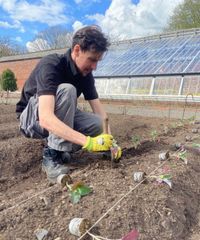
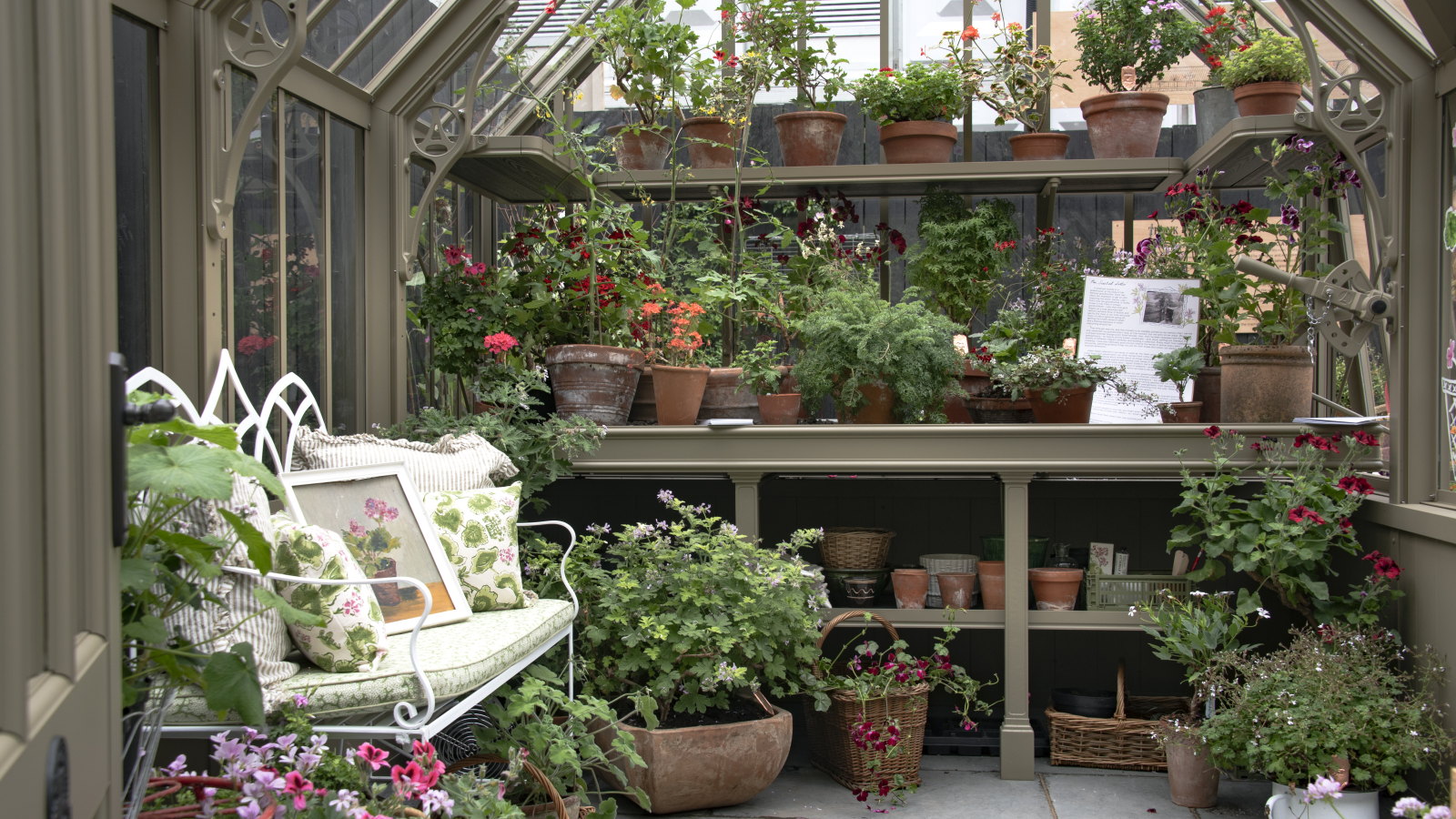
A greenhouse is a wonderfully valuable space for gardeners, and come late fall, it becomes a haven to protect plants for winter and do late sowings of cold-hardy crops. Even an unheated greenhouse can be 10-30°F warmer during the day, and several degrees warmer at night, providing an ideal, protected environment for plants.
I worked in several gardens with greenhouses, including one with two large restored Victorian glasshouses. They were a great space to overwinter plants indoors. I've also grown microgreens in there year-round, and propagated plants indoors in late fall. November isn't just a time for fun jobs like propagating, though. I also found it an ideal time to prepare for winter and spring by cleaning and sorting the space.
For this list of greenhouse jobs for November, there is a mix of routine (but still highly useful) and enjoyable tasks. These greenhouse ideas for the month include sowing, propagating, and plant care, as well as some clearing, cleaning, and prepping.

7 greenhouse jobs for November to remember
Your fall gardening checklist is likely chock-full of jobs to do this month. However, if there is inclement weather, this provides an ideal opportunity to take shelter in the greenhouse and complete some of these greenhouse jobs for November.
1. Clean the greenhouse
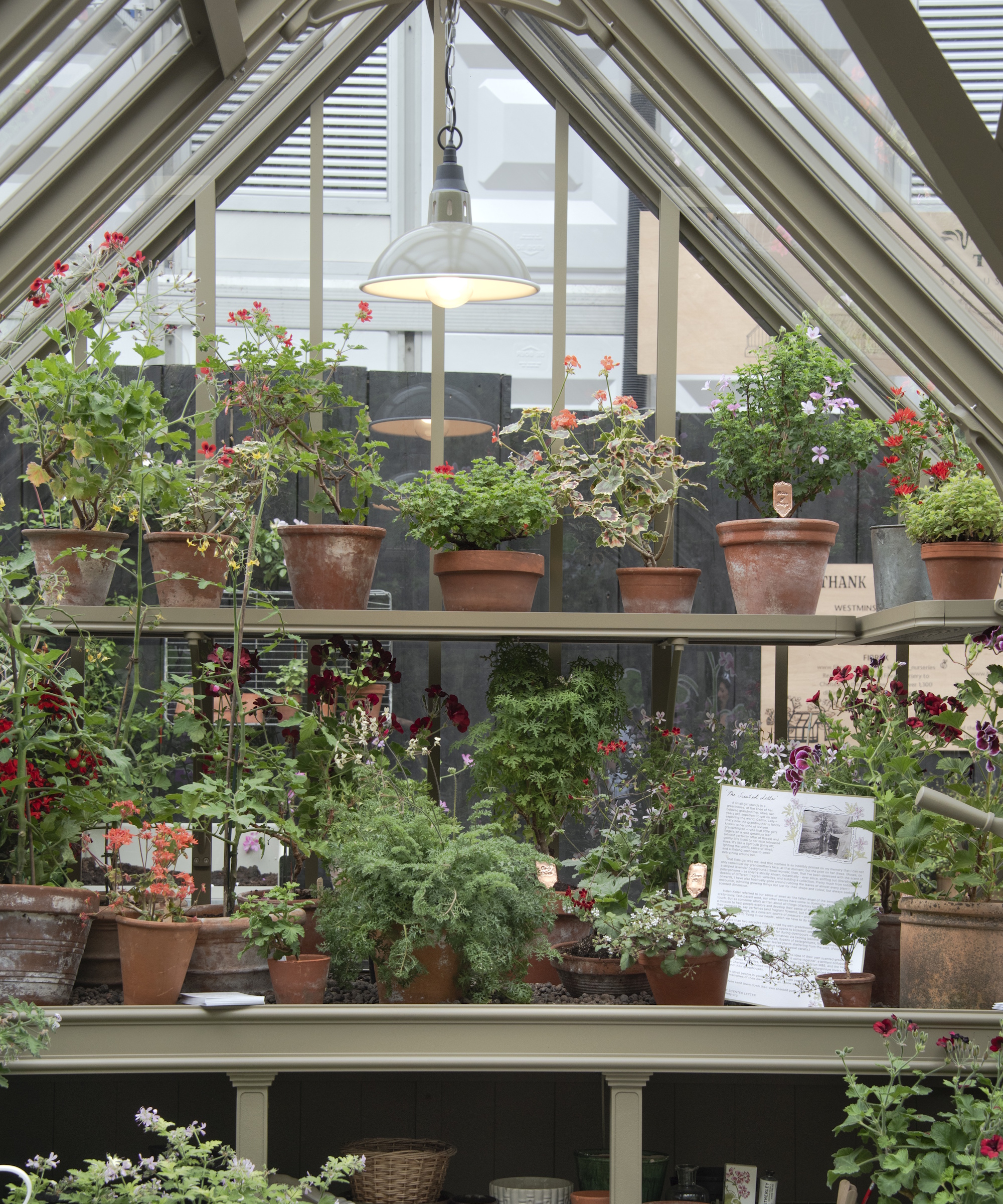
Cleaning and maintaining the structure is an important part of winterizing a greenhouse, and this month is an ideal time to make a head start on it. Trust me, any plants in there for winter will thank you, and a clean greenhouse gets you off to a great start for the next gardening year.
Start with the glass. If you used shading paint earlier in the year, remove it to maximize the light levels reaching the plants. Give any greenhouse panes a good clean, inside and outside, to ensure plants receive the most light possible during the winter months, when levels are naturally at their lowest.
Give the floors and benches a sweep, and clean any greenhouse staging and frames with disinfectant (such as this Hydrogen Peroxide All Purpose Cleaner at The Home Depot) to combat any lingering pests or diseases.
Design expertise in your inbox – from inspiring decorating ideas and beautiful celebrity homes to practical gardening advice and shopping round-ups.
It is also a great time to remove leaves from your gutters, so they don't get clogged. This is especially important if you are harvesting rainwater and storing it in a rain barrel to water plants.
2. Install insulation
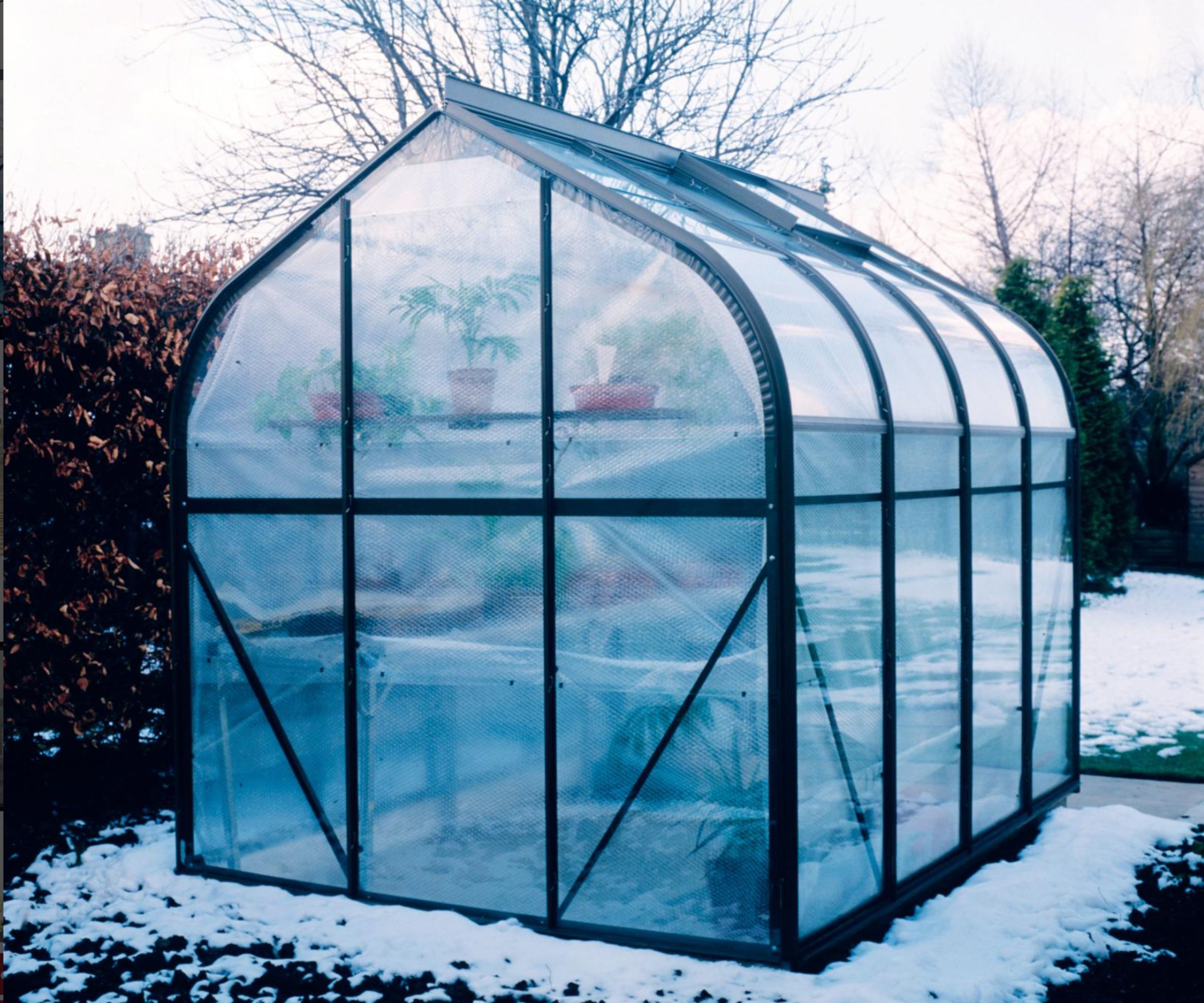
Keeping a greenhouse warm expands the potential range of uses over the colder months of the year. If your greenhouse isn't currently heated, there are measures you can put in place this month to keep it warmer over winter to fit any budget.
A fan heater, such as this greenhouse heater with a thermostat at Amazon, can make it warm enough to overwinter tender plants and grow plants from seed through the colder months, with the added assistance of a heated propagation mat (like this seedling heat mat at Walmart).
But if you are just looking to overwinter cold-tolerant vegetables or ornamental plants, you don't always need expensive heaters. This month is an ideal time to attach bubble wrap to the inside of the glass to insulate the wall and roof of the greenhouse.
Using bubble wrap protects plants from frost and reduces heat loss. Rather than wrap the entire structure, a simpler alternative is to use horticultural fleece to cover plants if you merely want to insulate them from the cold.
3. Do final sowings
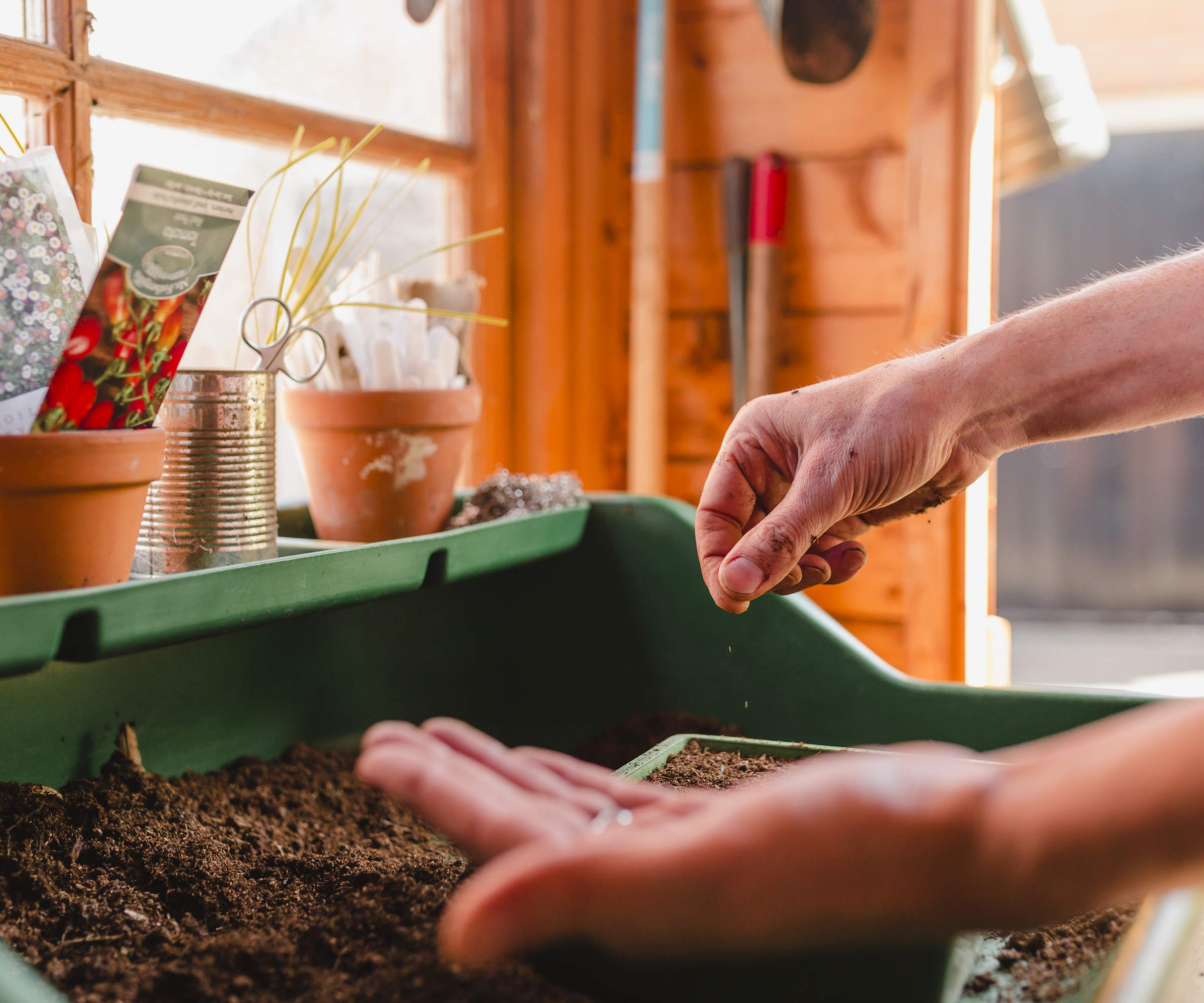
A greenhouse can extend the growing season for vegetables and herbs, and also offer the opportunity to start flower seeds indoors for earlier blooms next year.
The likes of lettuce, spinach, arugula, and Asian leaves such as mizuna, bok choy, and mustards can thrive in cooler fall temperatures and make great vegetables to grow in a greenhouse in the fall.
In terms of flowers, hardy annuals, including sweet peas, cornflowers, larkspur, California poppy, and marigolds, can all be sown in November to overwinter in a greenhouse and flower in spring.
All seedlings need warmth to germinate and survive, so you may need to insulate or heat a greenhouse to ensure the minimum greenhouse temperature stays above 45°F for seedlings to grow during winter.
A greenhouse thermometer (such as this bluetooth digital hygrometer at Amazon) can help you track the temperatures during the day and night to keep them at safe levels for seedlings.
4. Take cuttings
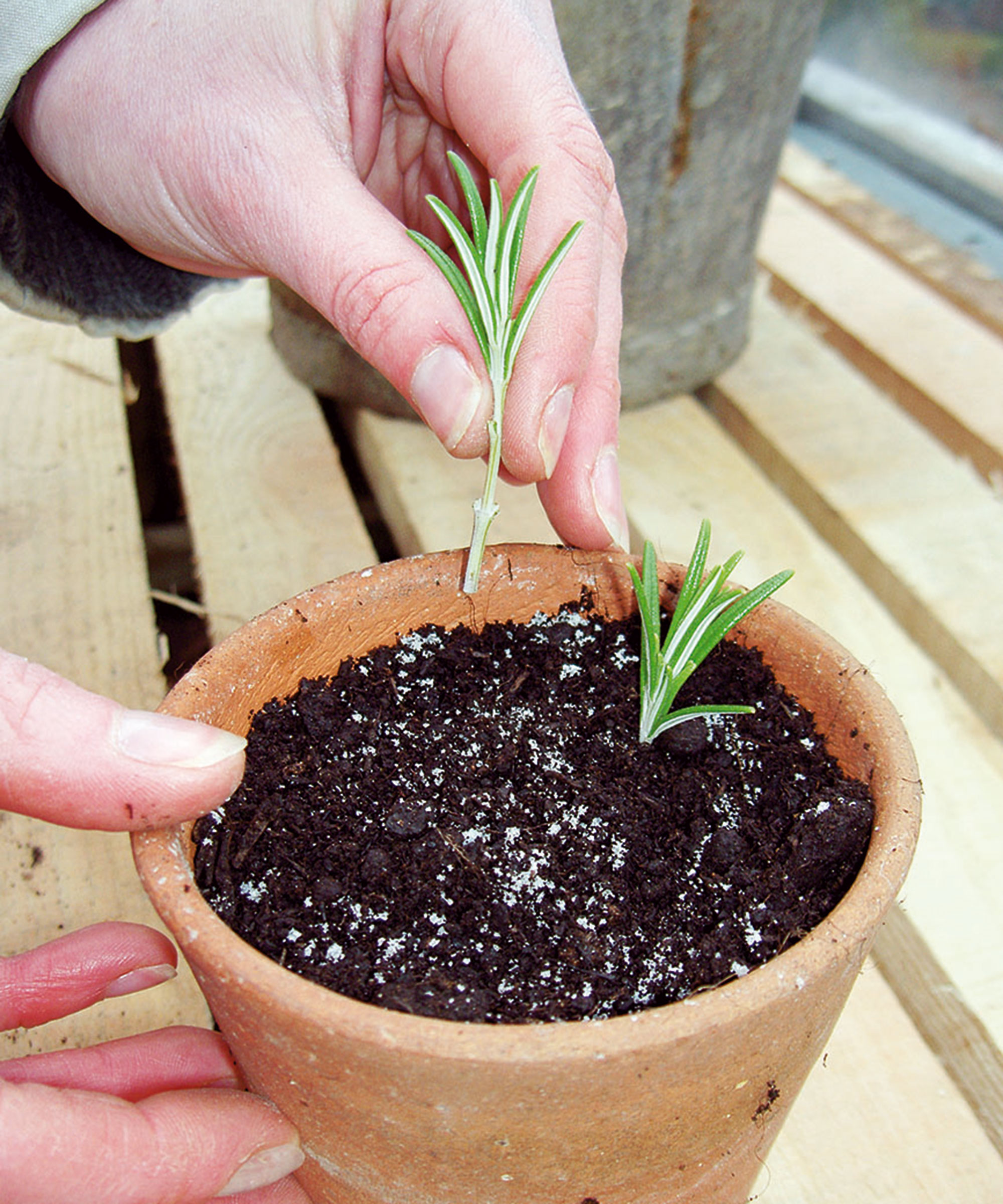
You can take plant cuttings this month to overwinter in the greenhouse, as they don't need especially warm temperatures, just a protected, frost-free place to start developing roots.
You can propagate plants in November in two ways. Shrubs are suitable for hardwood cuttings, while you can propagate perennials from root cuttings.
Root cuttings are great for perennials with fleshy roots, such as phlox, verbascum, and hardy geraniums, and you can propagate many new plants from one parent. To do this, carefully dig up plants and cut 3-4 inch sections of healthy roots with a sharp knife.
Thinner roots can be laid on the surface of compost and covered with a thin layer of grit. For perennials with thicker roots, slice them with a horizontal cut at the top and an angled cut at the bottom and place them into pots with the top end flush with the soil surface.
5. Clear out old crops
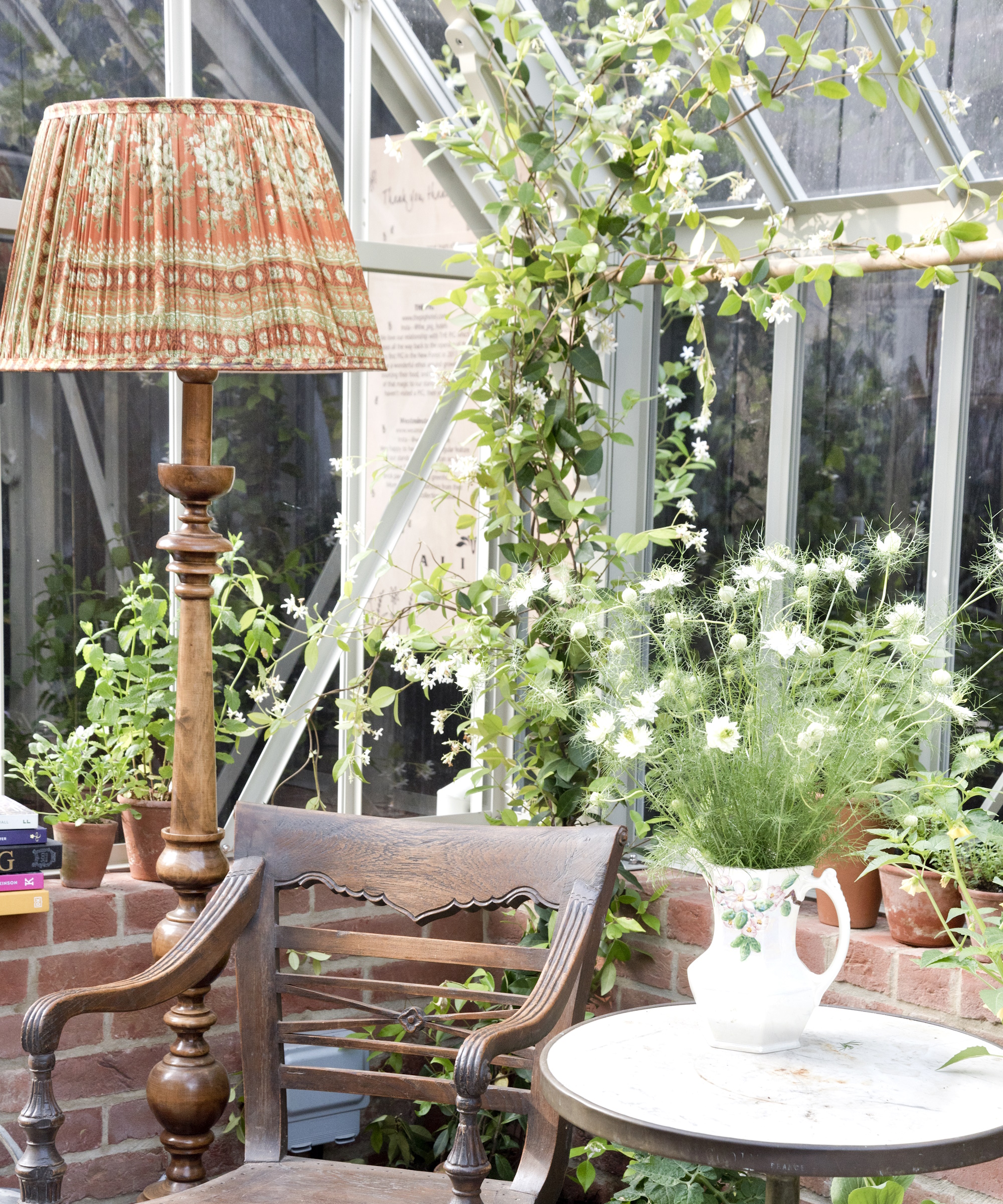
If you haven't gotten around to it yet, now is the time to remove any old summer crops from the greenhouse, whether you grow them in beds, raised beds, pots, or grow bags.
Heat-loving crops like tomatoes, cucumbers, eggplant, and peppers are often grown in greenhouses in cooler climates, but they are likely to have stopped producing harvests come November. If you do have any fruits left on your tomato plants, it is better to ripen green tomatoes with a banana in a paper bag, rather than stubbornly leaving them on the plant.
Remove the summer crops and use them to make compost, provided they show no signs of pests or diseases.
The resulting space in greenhouse beds or raised beds can be used to sow some fast-growing vegetables like arugula, lettuce, or spinach for winter crops, or you can cover the beds with mulch and let them settle until spring.
6. Wash pots and trays
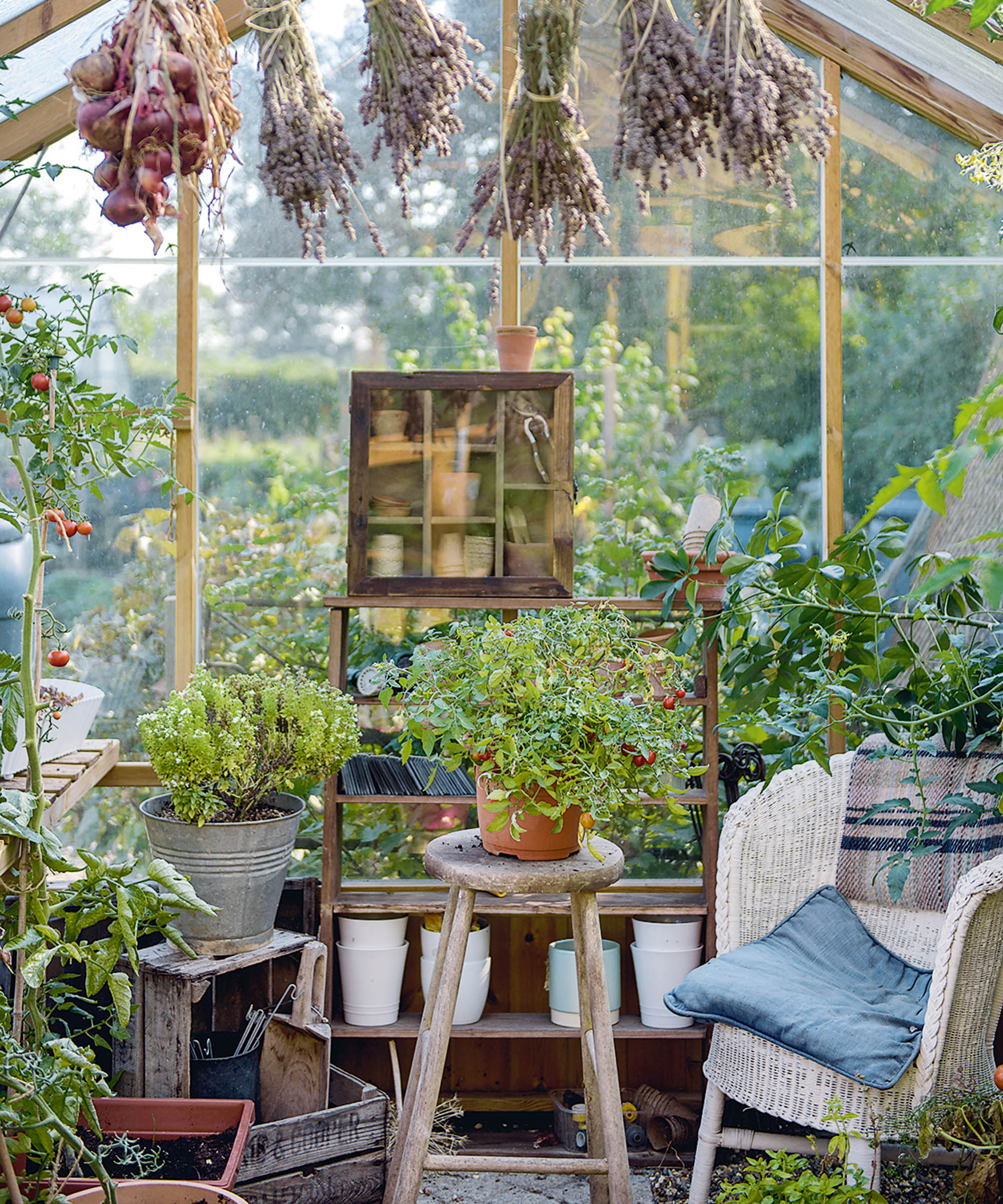
It may not be a glamorous task, but washing all your empty pots and trays keeps the greenhouse pest and disease-free. And it ensures they are all ready to use again come spring.
Bacteria, viruses, and fungi can all live and overwinter in any old soil left in your pots and trays. An annual winter clean prevents them from building up and also removes any pests loitering around, as aphids, spider mites, fungus gnats, and more can thrive in the greenhouse over the colder months and continue to breed and trouble plants.
To clean flower pots, start with a heavy-duty brush to remove any old soil or debris from the inside of the pot or tray. Then make a solution of one part bleach to ten parts water, and soak your containers in it for around half an hour.
Let the pots and trays dry naturally and then neatly store them away in the greenhouse. It is an under-estimated way to prepare for seed sowing, but it means your containers are ready for when you start sowing seeds indoors come spring.
7. Ventilate on dry days
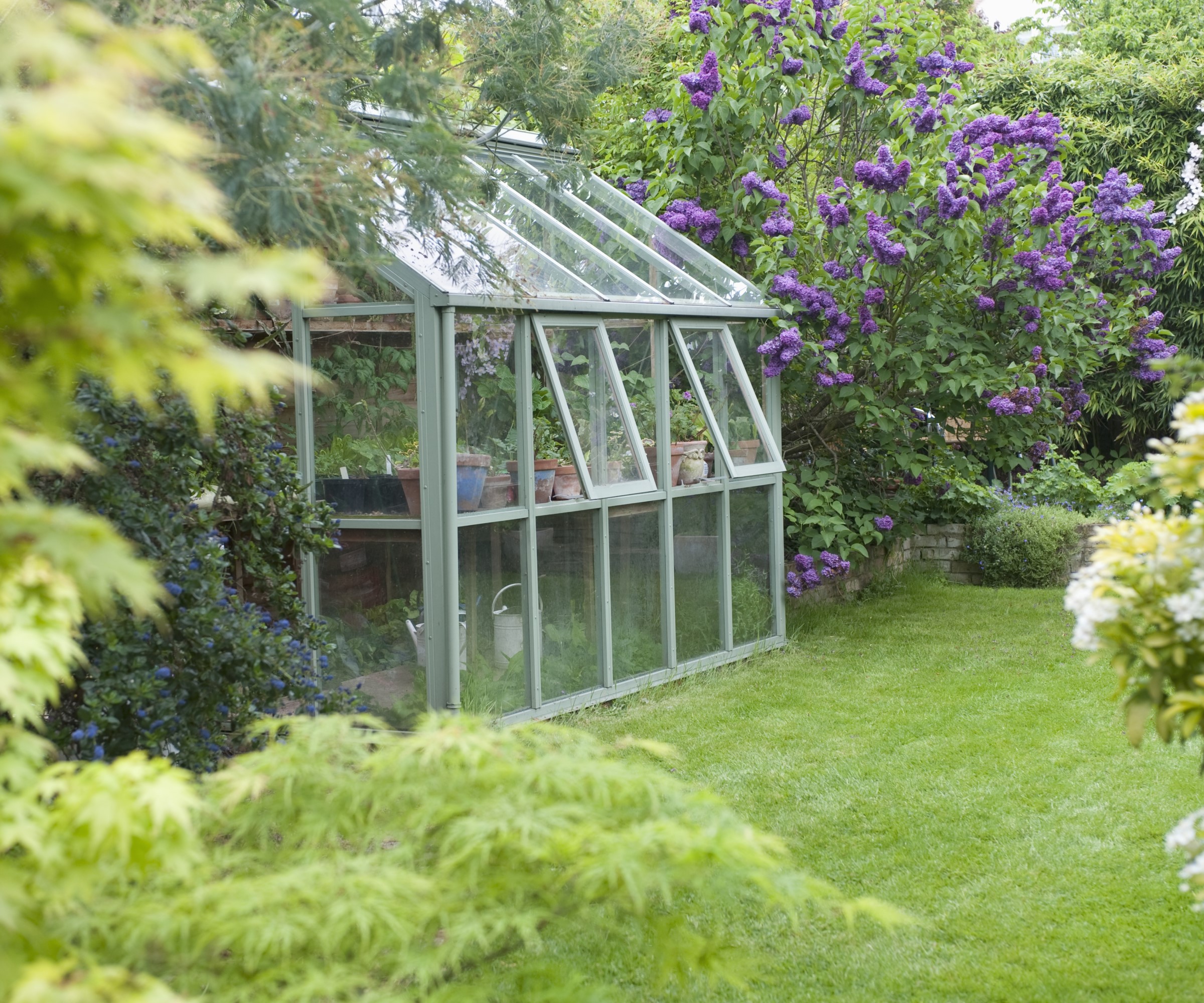
When you think of greenhouse ventilation, you probably imagine hot summer days where you need doors and vents open to cool down your plants.
However, the importance of ventilating a greenhouse in fall and winter is often underestimated. But it is something to bear in mind this month, to reduce the risk of diseases.
Air circulation is crucial for disease prevention. It reduces humidity, and moist air can leave plants susceptible to fungal diseases. You can ensure good circulation by opening vents, opening doors, or using a fan on dry and sunny fall days.
Close the doors or vents again in the afternoon to trap the last of the day's heat in the greenhouse, so that warmth can be conserved into the evening.
Plants will need watering in late fall and winter in greenhouses, but do so carefully. They need a careful approach to avoid overwatering plants, which increases the risk of root rot during the colder months.
Water deeply only when essential, and use a soil moisture meter to judge when to water plants in containers. Also, when you water plants, avoid wetting the foliage, as soaking wet leaves are more at risk of fungal diseases.

Drew has worked as a writer since 2008 and was also a professional gardener for many years. As a trained horticulturist, he worked in prestigious historic gardens, including Hanbury Hall and the world-famous Hidcote Manor Garden. He also spent time as a specialist kitchen gardener at Soho Farmhouse and Netherby Hall, where he grew vegetables, fruit, herbs, and cut flowers for restaurants. Drew has written for numerous print and online publications and is an allotment holder and garden blogger. He is shortlisted for the Digital Gardening Writer of the Year at the 2025 Garden Media Guild Awards.


